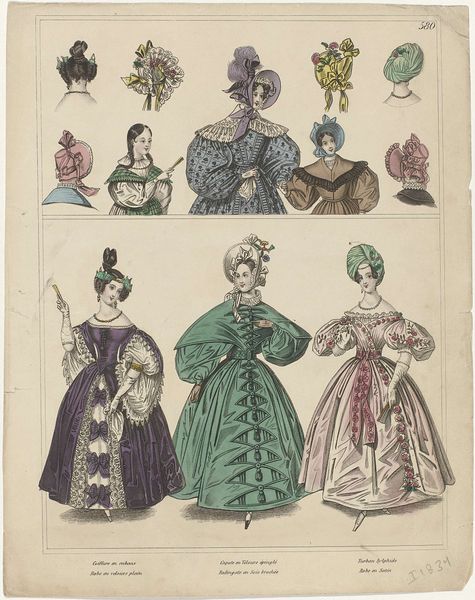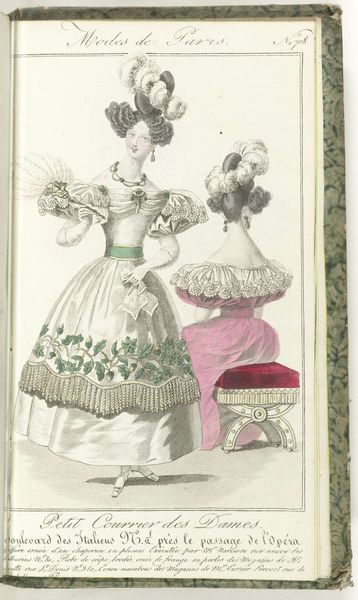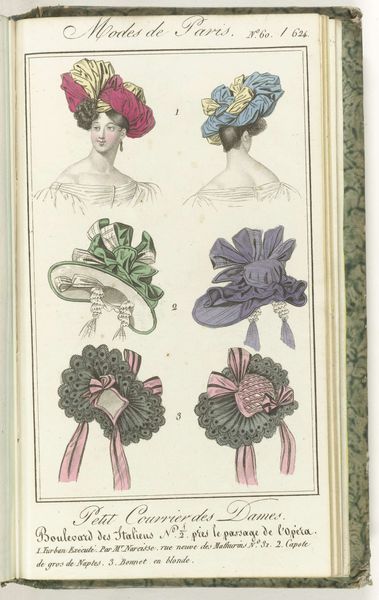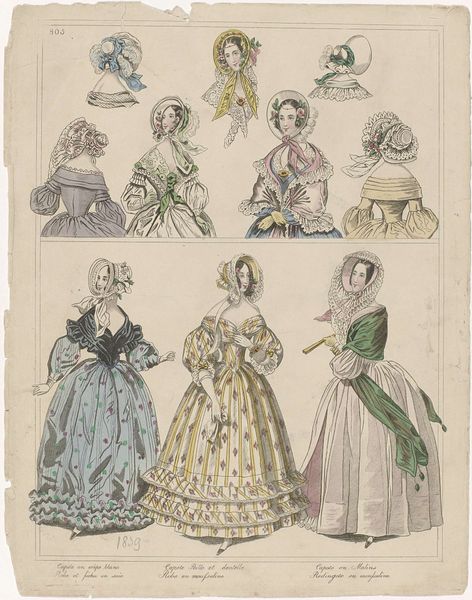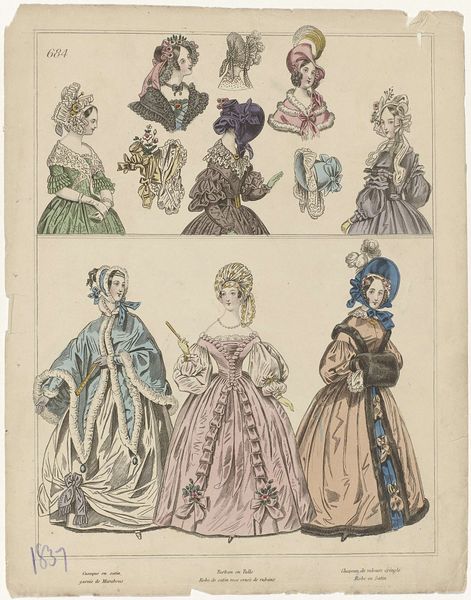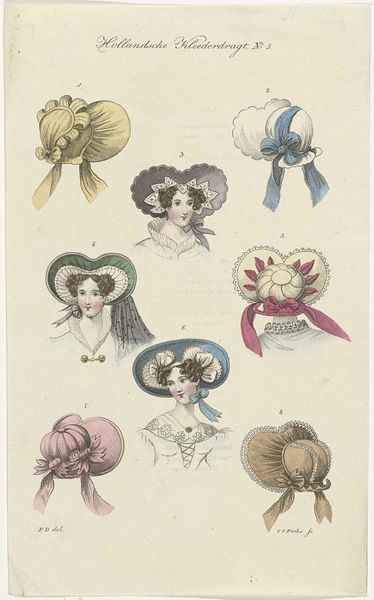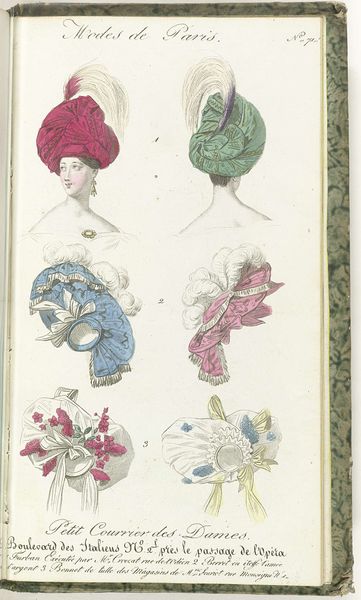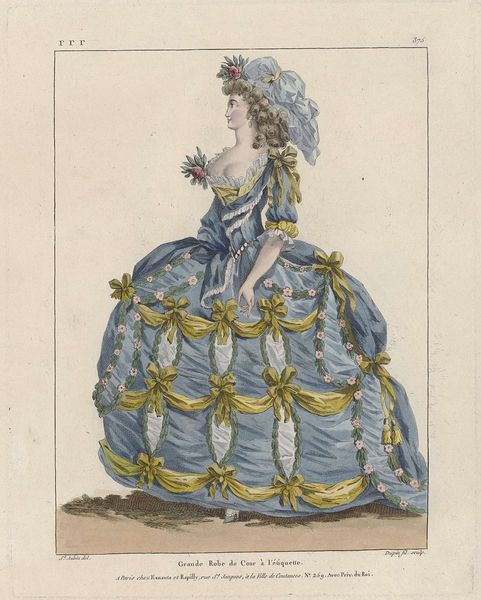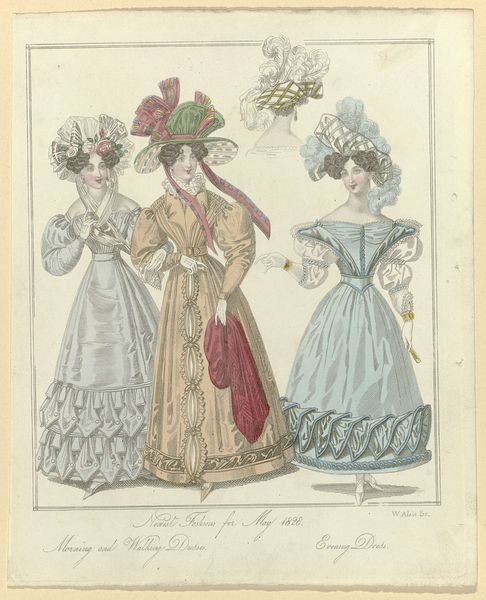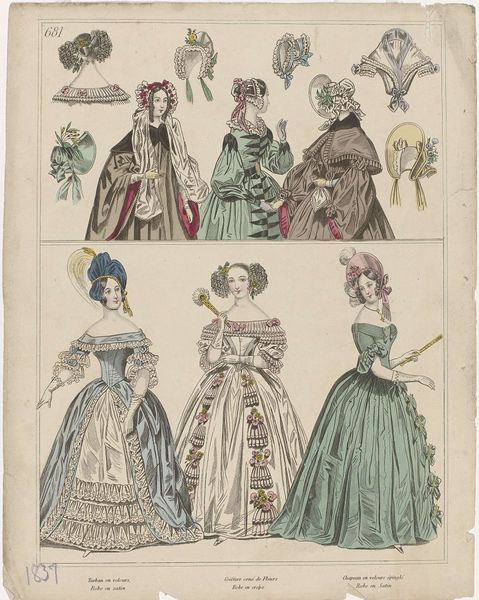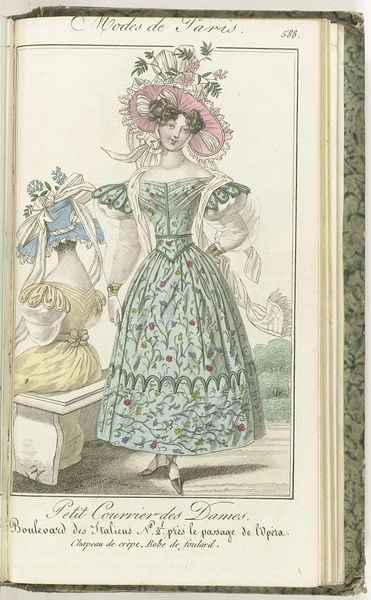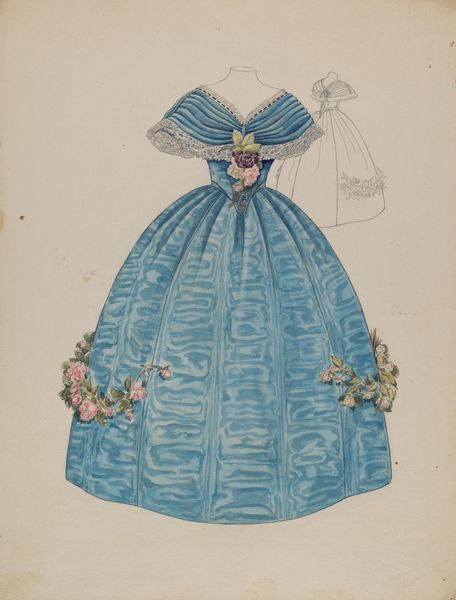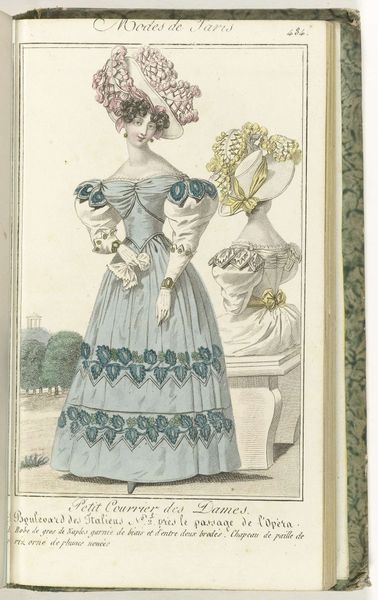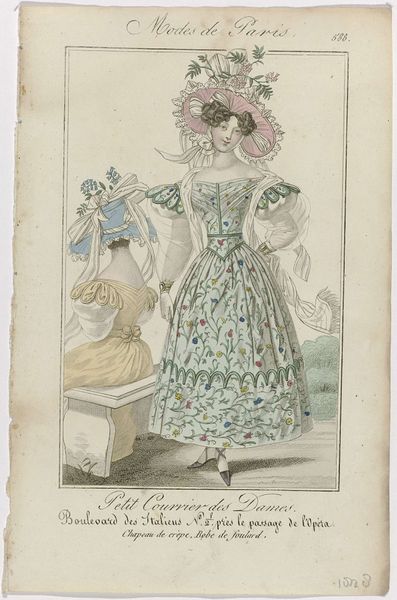
Revue des Modes de Paris, Mai 1834, No. 23 : 1. et 2 Capote à demi voil (...) 1834
0:00
0:00
print, engraving
# print
#
romanticism
#
genre-painting
#
engraving
Dimensions: height 225 mm, width 142 mm
Copyright: Rijks Museum: Open Domain
Curator: So, we have "Revue des Modes de Paris, Mai 1834, No. 23" an engraving by Montaut d'Oleron, which presents a collection of women’s fashion items. What grabs you first? Editor: It's quite visually busy. All those hats and garments displayed almost as specimens. They're pretty, but the arrangement feels almost clinical. What do you see in this piece? Curator: I see a carefully constructed commentary on 19th-century Parisian society, specifically the role of women and the rise of consumer culture. Fashion plates like these were powerful tools that reflected and shaped ideals of femininity, status, and taste. Consider how the female form is almost erased, represented only by clothing – suggesting women’s identities were perhaps overly defined by their attire. Editor: That's an interesting point! I hadn't thought about the lack of bodies as a commentary on identity. It makes me wonder, who was this image really for? Was it empowering or restrictive for women? Curator: A crucial question! While it might appear restrictive, consider how publications like these created new opportunities for women as consumers, artisans, and even as subtle subverters of the imposed norms. Owning or altering clothing became a way to express individuality within a highly regulated system. Notice the intricate details – the lace, the ribbons, the feathers – each a potential site of resistance or affirmation. How does the presentation in print format alter the context in your view? Editor: It is almost like an early version of product placement. The print format definitely gives the items a sense of authority and desirability, like this is the standard to aspire to. Thinking about this as social commentary adds a whole new layer to what I originally saw as a pretty fashion plate. Curator: Exactly! It shows us how art, even in seemingly commercial forms, can be deeply embedded in social and political discourses. There is more here than just beautiful clothes. Editor: Absolutely. I’ll never look at a fashion plate the same way again!
Comments
No comments
Be the first to comment and join the conversation on the ultimate creative platform.
